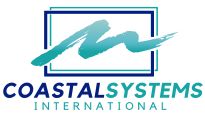Revenues
A well-designed waterfront isn’t just a beautiful place to visit—it’s a long-term revenue generator. At Coastal Systems, we understand the business side of waterfront development. Our designs focus on activating public and private spaces in ways that drive foot traffic, boost engagement, and increase returns. From marina fees to vendor leases, events, and tourism dollars, the potential revenue streams in a waterfront development are diverse and significant when thoughtfully planned from the start.
Activating Revenue Zones
To generate sustainable revenue, every inch of waterfront space must serve a purpose. We strategically locate cafes, kiosks, retail spaces, and flexible vendor stalls in high-traffic areas to capture interest and encourage spending. Public spaces like event lawns, open plazas, and promenades are also revenue-generating assets when properly designed. These areas can host everything from concerts and food festivals to seasonal markets and weddings—each contributing directly or indirectly to a project’s financial success.
We think beyond traditional real estate models to create spaces that are multifunctional and income-positive. A scenic overlook can double as a photo-op and brand activation zone. A waterside trail can connect to fitness programming and guided tours. These layers of use expand revenue opportunities while enhancing the visitor experience.
Marina and Water-Based Income Streams
Marinas and water access points are valuable pieces of the revenue puzzle. Slip rentals, boat storage, maintenance services, and fuel sales all provide dependable income if planned properly. Our marina designs include scalable options for private and transient vessels, yacht charters, paddleboard and kayak rentals, and even floating hospitality features like cafes or boutique retail.
In many markets, marinas serve as economic anchors that drive traffic to surrounding retail and hospitality tenants. That’s why we carefully plan connections between land- and water-based activity. Boat slips should link to walkable promenades. Docks should feed into restaurants, not just parking lots. Every detail is optimized for synergy across uses.
Public-Private and Mixed-Use Development Models
Coastal Systems brings extensive experience in working with both public and private stakeholders. In many cases, waterfront revenue is maximized through strategic partnerships—city governments offering long-term leases or tax incentives, developers funding infrastructure in exchange for density bonuses, or retail tenants co-investing in events and programming.
We help our clients evaluate different development models to determine what makes the most financial sense. That includes assessing revenue splits, understanding local permitting and business regulations, and creating adaptable site plans that allow for new uses as the market evolves. Flexibility is key—projects that can adjust to shifting trends and user demands stay profitable longer.
Boosting Local Economy and Indirect Value
Waterfront development doesn’t just generate direct income. It also stimulates the surrounding economy—raising property values, supporting small businesses, creating jobs, and increasing tourism. These indirect benefits are part of the ROI, and we consider them when planning project phasing, access, and land use. We identify how improvements like pedestrian access, landscape upgrades, and transit connectivity can elevate nearby properties and unlock regional investment.
We often work with municipalities to craft development strategies that boost long-term tax revenue without overburdening infrastructure or losing public access. It’s a careful balance, but one that yields powerful results when done correctly. Our team brings the experience to guide that process—helping align public goals with private opportunity.
Realizing Visions for over 30 years
